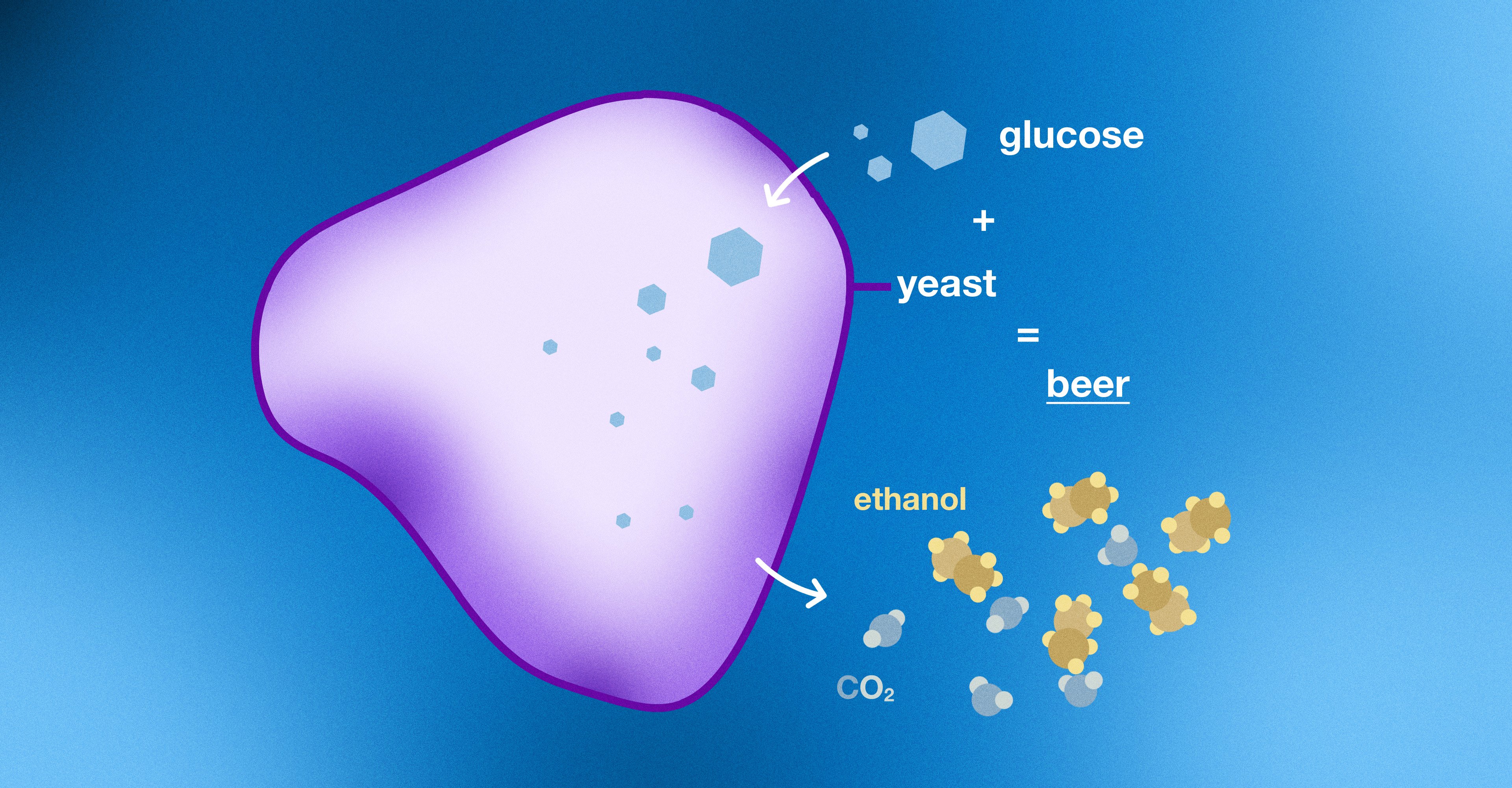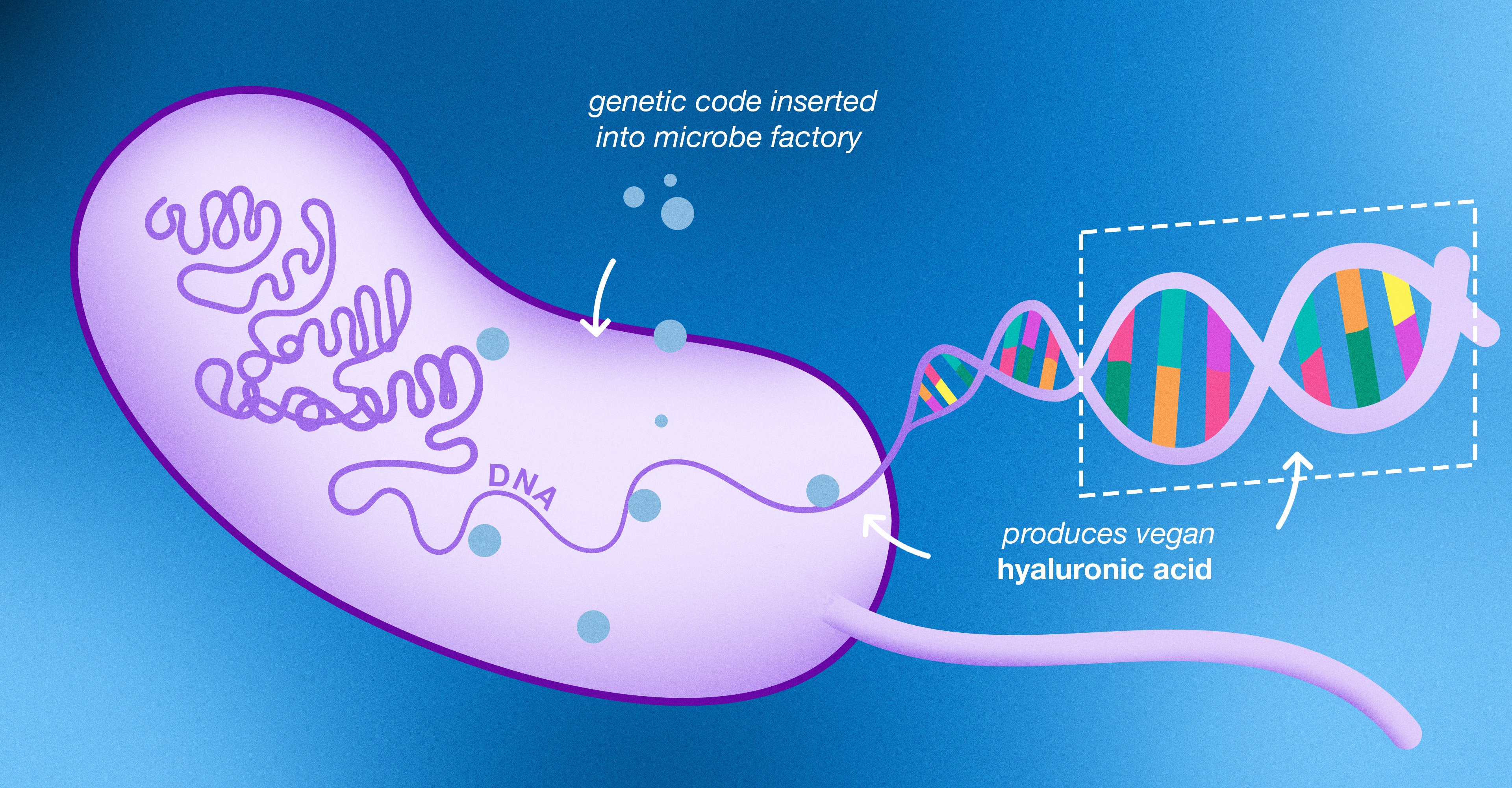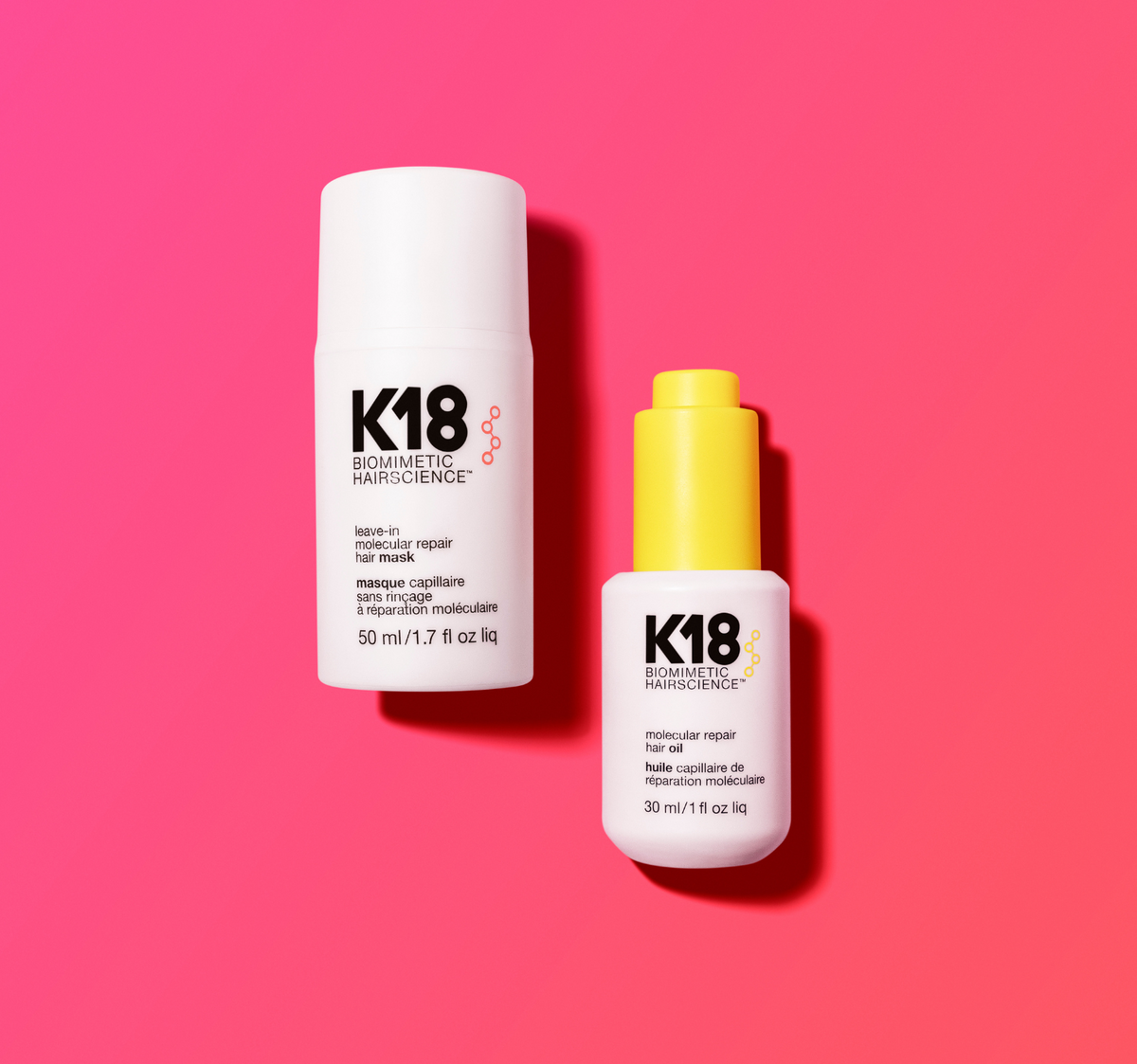short on time? here’s the scientific gist of it: Traditional cosmetic chemistry often uses ingredients found in nature, depleting our Earth’s resources and creating waste. Genetic engineering and synthetic biology are turning bacteria into microscopic factories for sustainable cosmetic ingredient production—bypassing the need for traditional raw materials.
got time? here’s the deeper dive.
crafting cosmetic ingredients, the traditional way
A simple beauty product becomes complex when you understand what it takes to create. Traditionally, many industries, including beauty, have relied on large volumes of animal or plant raw materials to purify relatively small amounts of specific ingredients. While there is a strong appeal in harnessing the power of nature for cosmetic formulations, this approach can be resource-intensive and environmentally taxing. Extracting botanical and animal-based ingredients not only depletes natural resources but also requires substantial energy and water usage, contributing to ecological strains.
One way to think about this comes from an example in a Byrdie article: if your daily hair serum includes jasmine oil, that means 2,000 pounds of jasmine flowers were extracted + thrown away to make just one 1 pound of oil. This puts a lot of strain on our limited natural resources and the environment, uses energy, and creates excess waste—which isn’t sustainable. This resource-intensive nature of traditional cosmetics production highlights the growing need for more sustainable alternatives.
the future of beauty is bio-powered
Previously we talked about how synthetic biology—the subset of biotechnology that focuses on editing DNA to produce natural or novel compounds—can be used to create ingredients more sustainably and efficiently. With biotechnology, we can bypass the need for extracting raw materials from plants and animals, and use microbes as factories to produce ingredients more efficiently in a way that’s better for the environment. This reduces the reliance on resource-intensive practices and promotes a more sustainable future for the cosmetics industry.
microorganisms = genetic engineering powerhouses
Microorganisms produce these ingredients through the process of fermentation - the same process that produces wine and beer. Fermentation is the chemical breakdown of the carbohydrate glucose by microorganisms to produce different compounds. In the case of wine and beer, yeast converts sugar into ethanol, AKA alcohol, and carbon dioxide. In cosmetics, fermentation converts raw materials into the cosmetic ingredients we know and love and novel ingredients that we create with synthetic biology.

microbial factories in action
Microbial factories may sound like science fiction, but they are already being used in cosmetics today. You may be familiar with hyaluronic acid, a moisturizing ingredient commonly used in skincare. Traditionally, this ingredient had been sourced from animal materials like rooster combs, but this supply chain was unsustainable and not vegan. Not only did the use of animals generate ethical concerns, but animal tissue can be difficult to manipulate, and animal-derived hyaluronic acid was associated with high costs. These issues with the way hyaluronic acid had been traditionally produced led to the rise of production of hyaluronic acid using bacteria like Escherichia coli (E. coli), which is the primary source of hyaluronic acid in the beauty industry today.

In their natural state, cells are similar to factories. To stay alive and function properly, cells divide labor the same way factories do. In the nucleus of the cell, DNA is the instruction center for the synthesis of products or proteins. Modern genetic engineering technology has enabled us to edit the genomes of organisms with great precision and engineer the DNA of bacteria like E. coli to produce specific compounds of interest.
By selectively editing E. coli to manipulate the expression of different genes and by incorporating a gene from another bacterium, Streptococcus zooepidemicus, E. coli can effectively produce hyaluronic acid in a vegan and environmentally friendly way. The final products produced by these microscopic factories then go through extensive purification processes, so rest assured that there are no leftover bacteria in your beauty products.
As we grapple with a rapidly changing beauty landscape and the effects of climate change, we need to look at cosmetic ingredient production differently. Synthetic biology and biotechnology bypass the need for resource-intensive and unsustainable ways of producing ingredients. We believe that the future of beauty is bio-powered and bio-based because nature’s toolkit allows us to empower product performance in the most efficient and sustainable way possible.



